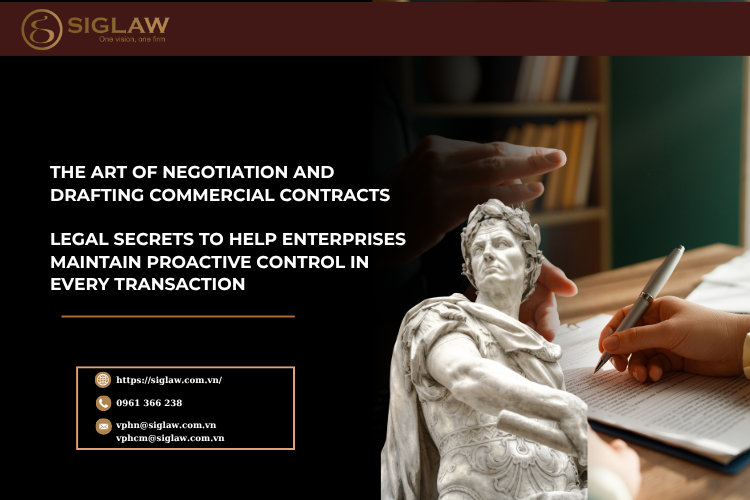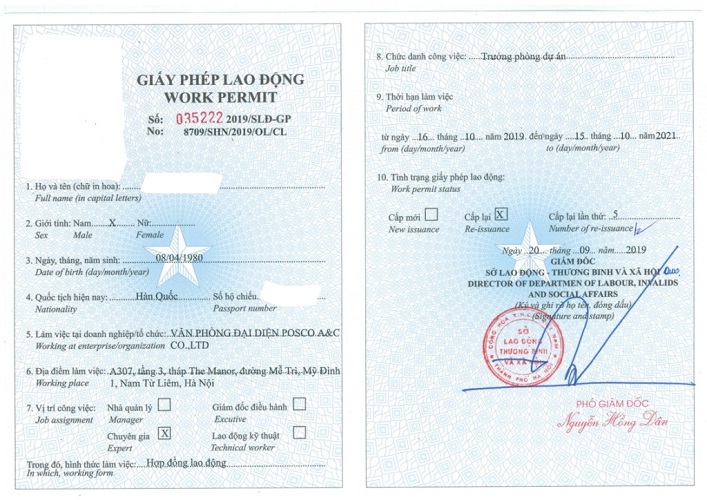LEGAL BASIS
- Investment Law 2020
- Competition Law 2018
- Decree 03/2009/TT-BYT
CONDITIONS FOR M&A RETAIL ENTERPRISES
In case of prohibiting the performance of M&A of retail companies
According to the Enterprise Law 2005 rules, only enterprises of the same type are permitted to merge. However, following the implementation of Enterprise Law 2014, which superseded Enterprise Law 2005, and now Enterprise Law 2020, mergers are no longer limited to companies of the same type, but other types of retail enterprises can carry out M&A activities with each other.
An important provision to note is that according to Article 30 of the 2018 Competition Law, economic concentration activities (including mergers and acquisitions of retail enterprises) that affect or are likely to significantly restrict Vietnamese market competition will be prohibited.
The National Competition Commission will base on the following factors to assess the impact or potential for significant anti-competitive effects of economic concentration activities (mergers, acquisitions):
- Combined market share of enterprises participating in the economic concentration in the relevant market: 02 enterprises with a total market share of 50% or more in the relevant market; 03 enterprises with a total market share of 65% or more in the relevant market; 04 enterprises with a total market share of 75% or more in the relevant market; or 05 enterprises or more with a total market share of 85% or more in the relevant market. Note that the above-mentioned group of enterprises with dominant market positions does not include enterprises with a market share of less than 10% in the relevant market. (According to Article 24 of the Competition Law 2018);
- Concentration in the relevant market before and after a merger or acquisition of a retail enterprise;
- The relationship of enterprises participating in mergers and acquisitions of retail companies in the production and supply chain for retail products or retail business lines of enterprises participating in the M&A is each other’s input or complements each other;
- Competitive advantages that M&A of retail companies bring in the relevant market;
- Possibility of a business after M&A to increase prices or increase profit margins on sales significantly;
- The ability of enterprises after M&A to eliminate or prevent other enterprises from entering or expanding the market;
- Specific factors in the industry or field in which enterprises participate in economic concentration.
If the merger and acquisition of a retail company under which the company receives the merger and acquisition fall under the economic concentration notification threshold (For details, refer to Article 33 of the Competition Law 2018, Article 13 of Decree 35/2020) /ND-CP), the legal representative of the company shall notify the competition authority before performing the M&A of the retail company. The subject of receipt and appraisal of notices of M&A is the National Competition Commission.
Cases to carry out M&A of retail enterprises
Except for the prohibited M&A of retail companies mentioned above, it can be seen that companies (of the same or different types) can merge and acquire retail companies as long as they meet the conditions of records, procedures…
PROCEDURES AND DOSSIER FOR M&A OF RETAIL ENTERPRISES
Stage 1: Preparation (Pre-M&A)
This is the preparation phase for the M&A of retail enterprises, playing an important role in the success or failure of the retail chain M&A. So, Phase 1 can be divided into the following main steps:
Step 1
Developing a retail chain M&A strategy: Sellers must carefully prepare and clearly define goals when performing M&A. At the same time, find out and evaluate (overall, detailed characteristics, …) the seller to see if the seller and the buyer have reached the official transaction stage or not. This is the key to successful trading. The buyer also needs to determine the merger’s purpose and the buying company’s characteristics to limit the disadvantage for themselves.
Step 2
Approaching the target enterprise: This is also the step where the buyer needs to define criteria (profit margin, appropriate geographical location, customer segmentation…) for significant profits.
Approaching the target retail company can be conducted through: the seller’s self-marketing, searches on the buyer’s information network, or through consulting units and brokerage organizations in the same field of business investment or M&A consulting units.
It should be noted that the reach of the acquired retail chain company will depend on the Seller’s preliminary assessment of the following factors before deciding to proceed to the next step of the acquisition process: The target enterprise must have activities in the field of exploiting the retail chain similar to the development orientation of the buyer; The retail company to be M&A has an existing source of customers, partners or a certain market share in the market that the Seller can continue to exploit and is consistent with the Buyer’s market acquisition strategy; Retail companies that are M&A with long-term or medium-term investment scale that can be taken advantage of as a result of technology investment, management experience, and skilled labor; Prioritize retail companies that are M&A with advantages in terms of land, facilities and infrastructure to minimize initial investment costs; The target enterprise occupies a certain position in the market, helping the buyer to reduce short-term costs and increase market share, taking advantage of the ability to cross-sell services or optimize market experience to further consolidate and create new business investment opportunities.
Step 3
Due diligence report: Based on preliminary assessments from step 2, the Buyer works with professional financial and legal advisors to evaluate the entire retail company before making a purchase decision.
However, reality shows that the Seller is not required to provide all the company’s internal information related to its internal information management regulations, requirements of shareholders, etc. As a result, both parties can sign a non-disclosure agreement before the buyer can access the seller’s data.
In Vietnam, during this period, depending on the target enterprise and the needs of the buyer, the buyer usually organizes an assessment of one or both types:
- Financial Due Diligence Report (“Financial Due Diligence”): The main task is to ensure compliance with accounting requirements, including loans from organizations and individuals, capital transfer, stability cash flow determination (taking into account the business cycle), checking asset depreciation and debt recovery, etc.
- Legal Due Diligence Report (“Legal Due Diligence”): The main task is to fully and in detail assess legal issues such as legal status, capital contribution and status of shareholders, legal rights and obligations of the target enterprise, assets, labor, projects, etc.
Although it is only one step in the overall M&A process, the results of a detailed valuation report are essential for buyers because they help them understand and summarize issues that need to be addressed in an acquisition or restructuring of a retail enterprise.
Stage 2: Negotiation and implementation (M&A signing)
Step 1: Negotiate and sign the M&A contract: From the detailed results of legal or financial appraisal, the Buyer clearly defines the goal of acquiring the whole or only a part, thereby serving as a basis for content negotiation in M&A. At this step, the following points should be noted:
Firstly, each feature of the type and variation of the M&A transaction form must be thoroughly researched to negotiate the appropriate and effective contents. Because in fact, M&A always go together, but the legal nature is different: while the merged company no longer exists and is wholly acquired by the seller; then with the acquisition, the two parties are consolidated into a new company instead of operating and owning separately. In “Acquisition” itself, there are many variations such as horizontal acquisition, market expansion mergers, consolidation acquisition, product expansion acquisition, group acquisition, etc.
Second, sometimes it is difficult for the Buyer and the Seller to reach an agreement on a price because the Buyer often offers too high a price and the Seller can only pay a lower price. To address this issue, the parties to the retail enterprise M&A transaction can appoint an independent, objective due diligence unit to determine the value of the Buyer.
Third, this step produces a contract that details the form, substance, and price of the M&A transaction. If successful, the process of M&A of retail companies is about to be completed. The M&A contract is the expression and recognition of the parties’ commitments to the transaction, so the M&A contract needs to be concluded and checked to ensure full rights and benefits for the parties involved in the transaction throughout the M&A process.
Step 2: Any acquisition of the company by the Buyer is not authorized by law until the legal process related to the approval of the transfer from the Seller to the Buyer has been completed, in particular concerning property, rights and liabilities. When this step is completed, the M&A deal can be considered closed. The legal documents and procedures to complete the M&A for retail companies include:
Firstly, because the retail chain is a business sub-sector under the Ministry of Health, enterprises that want to merge or acquire (M&A) retail companies need to meet the conditions set by the Ministry of Health. For example, as stipulated in Article 4 of Circular 03/2009/TT-BYT on the conditions of the GPP pharmacy chain:
- An enterprise with the function of distributing drugs and having a drug retail system.
- At least 05 pharmacies are meeting GPP standards nationwide.
- It meets the standard of “Good Drug Distribution Practice” (GDP) and has a drug warehouse that meets the “Good Storage Practice” (GSP) standard.
- And may have to comply with the requirements of quality director standards, standards for professional pharmacy managers, GPP pharmacy chain management regulations, etc., in Articles 5 to 7 of Circular 03/2009/TT-BYT.
Second, dossiers to carry out M&A activities in the retail chain:
| STT | Types of documents for mergers of retail companies | Type of document for the acquisition of retail companies |
| 1 | Merger contract | Enterprise acquisition contract |
| 2 | Minutes of the meeting and the decision of the merging company to approve the merger contract | Notice of change of business owner |
| 3 | Meeting minutes and decisions of the merged company to approve the merger contract, except where the merged company accounts for 65% of the contributed capital, voting shares of the merged company. | A valid copy of the document certifying the inheritance right to inherit the retail company. |
| 4 | Valid copies of Enterprise Registration Certificates or other equivalent documents of the merged companies. | Valid copies of personal papers/certificate of information of the Buyer, such as ID card/CCCD/Passport or Certificate of business registration |
| 5 | Some other relevant documents | Some other relevant documents |
Third, procedures for M&A in the retail chain.
| Procedures for Merger of retail companies | Procedures for Acquisition of retail companies |
| Step 1: Prepare the merger contract and the Charter as prescribed. | Step 1: Do procedures to change the business owner |
| Step 2: Prepare all documents as instructed above. | Step 2: Submit the application at the Business Registration Office – Department of Planning and Investment of the province/city where the enterprise is headquartered. |
| Step 3: Submit the dossier to the Business Registration Office (Department of Planning and Investment), where the merged company is headquartered. | |
| Step 4: Receive a new Certificate of Enterprise Registration or a Certificate of Change in Enterprise Registration. | |
| Step 5: The business registration office will update the termination status of the merged company. | |
| Completion time: 5-7 working days from the date of receiving valid documents |
Stage 3: Corporate restructuring (Post-M&A)
Post-M&A restructuring is a conundrum for the acquirer for M&A to succeed. Buyers face problems during this period are often instability in human resources, inconsistent management policies, conflicts in corporate culture, etc.
In addition, the resolution of legal and financial issues may have been guided by an in-depth assessment, but it is still possible to thoroughly address the backlogs. Whether the acquired company is effective depends on the acquirer’s capacity and experience.
Another problem causing headaches for management during the post-M&A restructuring period is the re-evaluation and use of human resources of the acquired company. Because in the due diligence stage, buyers are often only interested in financial, legal and other issues about the property, ignoring other issues related to the condition of employees.
For a free comprehensive M&A consultation, please contact:
Siglaw Firm
Head office in Hanoi City: No.44/A32-NV13, Gleximco A, Le Trong Tan Street, Tay Mo Ward, Ha Noi.
Email: vphn@siglaw.com.vn
Branch in the South: No.103 – 105 Nguyen Dinh Chieu Str., Xuan Hoa Ward, Ho Chi Minh.
Central Branch: 177 Trung Nu Vuong Street, Hai Chau District, Danang City
Email: vphcm@siglaw.com.vn
Hotline: 0961 366 238










